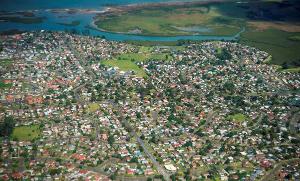Affordability improvement will be short-lived
Auckland’s recent market lull helped make houses more affordable last quarter, but that trend won’t last, warns a researcher.
Tuesday, April 5th 2016, 2:00PM
by Miriam Bell

The latest Massey University Home Affordability Report has just been released and it shows a small improvement in the affordability of Auckland houses.
Auckland’s median house price fell by $15,000 to $750,000 over the December 2015 to February 2016 quarter – but that figure still represents a $75,000 climb over the past 12 months
Report author Dr Susan Flint-Hartle said the “modest” annual improvement of 3.1%, in the last quarter, was due to lower interest rates and the Reserve Bank’s LVR restrictions.
It was good news for policymakers intent on moderating the persistent inflation of Auckland house prices, but didn’t offer much relief to first homebuyers, she said.
“Despite the small improvements we’ve seen over the past few quarters, Auckland remains 59% less affordable than the rest of New Zealand – and that is a record high.”
Further, that trend was beginning to tail off.
Flint-Hartle said that both the government and the Reserve Bank’s initiatives to curb investors and market activity were likely to be less effective in the next quarter.
“I can’t see Auckland houses getting any more affordable over the next year.”
A significant increase in supply would make a big difference to SuperCity affordability, but supply currently lags too far behind demand for there to be any immediate relief.
Flint-Hartle said both central and local government were to blame for the situation.
“There has been no real partnership aimed at incentivising effective housing development in the city.
“While there are some initiatives intended to increase supply in place, the supply shortage won’t be resolved overnight – it will take years and years.
“In the meantime, prices are likely to simply go up.”
Around the rest of the country, many regions are fluctuating in their affordability from quarter to quarter, the report shows.
Flint-Hartle said that, for example, improvements over the last three quarters in Hawke’s Bay have been reversed by a 6.7% deterioration in the most recent quarter.
“Similarly, the 10.5% improvement in affordability for the Central Otago Lakes region in the September quarter has been almost completely negated by declines over the past six months.”
The Central Otago Lakes region is the only region besides Auckland to be more unaffordable than the national average (by 48%).
Flint-Hartle said recent movements in affordability have largely been driven by falling or rising house prices.
“It seems house prices in these regions are being driven by demand, created by a buoyant tourist market and a ripple effect as some Aucklanders vacate the city for a more relaxed lifestyle or to seek better investment returns.”
Overall, there was a 9.2% annual improvement in affordability across New Zealand, which continues the trend of the past three quarters.
The most affordable region was Manawatū/Whanganui, which is 57% more affordable than the rest of New Zealand.
Flint- Hartle said lower interest rates contributed to the overall improvement in housing affordability – and should continue to do so in the immediate future.
“While the recent OCR cut reduces borrowing costs for homebuyers, improving affordability in the short-term, it remains to be seen whether lower mortgage rates will also push up house prices in the longer-term.”
| « Safe as houses | Free Investment Property Showcase Events: Auckland, Wellington and Christchurch » |
Special Offers
Comments from our readers
No comments yet
Sign In to add your comment
| Printable version | Email to a friend |



